Part 9: November 26 Broadcast

You are listening to BBC radio 4. In an hour, we will be presenting an interview with Richard Havel discussing the new Penultimate series of laptops. For the next hour, Professor David Stephenson will be presenting a documentary on the second 80 years war of the eighteenth century. This series will be running every third day, up to 50 episodes. If you want news of the current war in the Middle East please channel in to BBC radio 1.
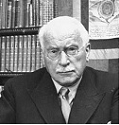 Good evening, and welcome to BBC radio 4. I’m Professor David Stephenson, professor of Dutch historical studies at Cambridge. This is the ninth part of our 50 episode special on the second 80 years war over Europe. Joining me for these broadcasts are fellow researchers and scholars Doctor Albert Andrews, specialist in German studies from the Berlin academy, Professor Robert Lowe, specialist in French studies at Cambridge, and a graduate student and technical assistant, Anton Thatcher. Last week, we discussed growing Dutch ambition overseas, their foothold in Mysore and their continued pursuit of the Spanish.
Good evening, and welcome to BBC radio 4. I’m Professor David Stephenson, professor of Dutch historical studies at Cambridge. This is the ninth part of our 50 episode special on the second 80 years war over Europe. Joining me for these broadcasts are fellow researchers and scholars Doctor Albert Andrews, specialist in German studies from the Berlin academy, Professor Robert Lowe, specialist in French studies at Cambridge, and a graduate student and technical assistant, Anton Thatcher. Last week, we discussed growing Dutch ambition overseas, their foothold in Mysore and their continued pursuit of the Spanish. And those ambitions would add up over the next few years. The election was coming up very shortly, but it was time for a new cabinet. Whoever would be taking the reins would have some interesting options in front of them.
And those ambitions would add up over the next few years. The election was coming up very shortly, but it was time for a new cabinet. Whoever would be taking the reins would have some interesting options in front of them. The elections brought in the Orange party candidate Piet de Vadder. He and his entire cabinet were young, motivated, bright and ambitious. They seemed the perfect candidates to the needs of the Dutch people. However, with not one of them over 30, no one was well versed in dancing to the politics of the time, and this would lead to a terrible calamity in a short time. Their recklessness would drag the Dutch into the greatest war the world had ever seen.
The elections brought in the Orange party candidate Piet de Vadder. He and his entire cabinet were young, motivated, bright and ambitious. They seemed the perfect candidates to the needs of the Dutch people. However, with not one of them over 30, no one was well versed in dancing to the politics of the time, and this would lead to a terrible calamity in a short time. Their recklessness would drag the Dutch into the greatest war the world had ever seen.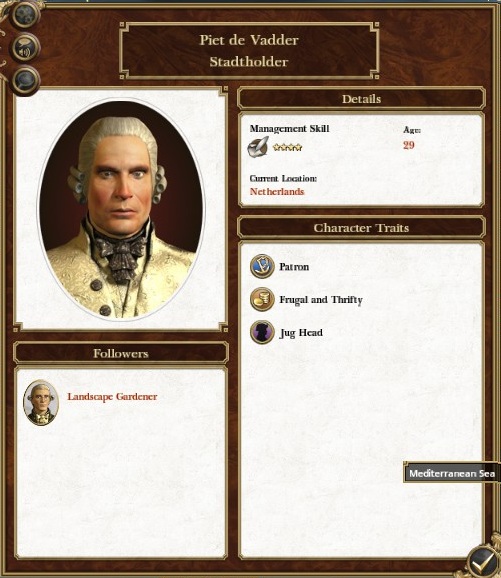
Piet de Vader at the outbreak of the 80 years war. He was only 26 when he was elected.
 The start went innocently enough with the declaration that they would make good on their electoral promise to finally wipe out the Spanish. Spain went out with a whimper, not a bang. A few of the veteran invaders from Spain led by Waldeck hounded down the last resistors in Milan, purchasing their way at the cost of several technological patents through Genoa, who betrayed the trust of the Spanish they were supposed to be protecting. The battle itself was bitter and bloody, but utterly one sided.
The start went innocently enough with the declaration that they would make good on their electoral promise to finally wipe out the Spanish. Spain went out with a whimper, not a bang. A few of the veteran invaders from Spain led by Waldeck hounded down the last resistors in Milan, purchasing their way at the cost of several technological patents through Genoa, who betrayed the trust of the Spanish they were supposed to be protecting. The battle itself was bitter and bloody, but utterly one sided.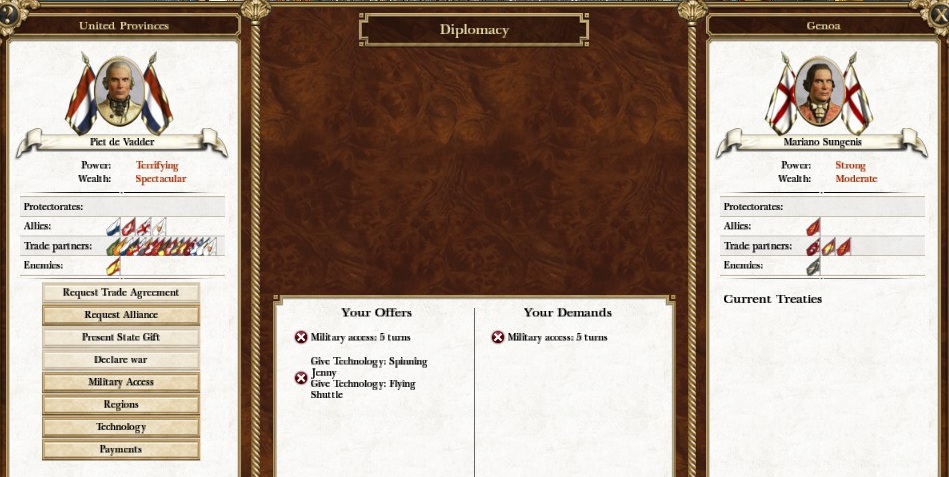
Dutch bribe the Genoans to get through to Milan.
 The final nail in the Spanish coffin came as a surprise to no one after the fate of France. The world in general knew that the time of Spain had ended, and with France subsumed into her enemy, the fall of the Spanish Empire was only a matter of time. If not the Dutch, the British were a rising power that had often come to blows with Spain and France, and the Ottomans were always willing to look out for the interests of the North African coast.
The final nail in the Spanish coffin came as a surprise to no one after the fate of France. The world in general knew that the time of Spain had ended, and with France subsumed into her enemy, the fall of the Spanish Empire was only a matter of time. If not the Dutch, the British were a rising power that had often come to blows with Spain and France, and the Ottomans were always willing to look out for the interests of the North African coast. In America, a few strong governors managed to hold on to their own provinces, but they were branded as rebel nations by the European powers. Only Mexico had managed to attain their own sort of legitimacy.
In America, a few strong governors managed to hold on to their own provinces, but they were branded as rebel nations by the European powers. Only Mexico had managed to attain their own sort of legitimacy.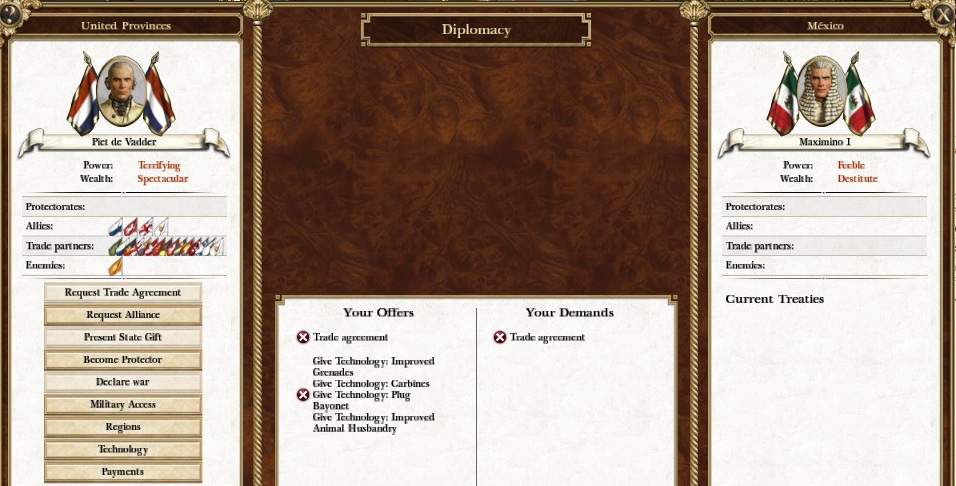
The kingdom of Mexico arises from the defeat of the Spanish. Ambivalent to their former rulers, the Mexicans agree to trade with the Dutch.
 With Spain out of the way, the young Dutch ministers still had their fingers on the trigger. Unwilling to wait until their forces in the Marathas had built up, they declared war in 1720. Dismissive of the Marathan army, the Dutch marched their forces out to attack Carnatica and Goa.
With Spain out of the way, the young Dutch ministers still had their fingers on the trigger. Unwilling to wait until their forces in the Marathas had built up, they declared war in 1720. Dismissive of the Marathan army, the Dutch marched their forces out to attack Carnatica and Goa. Both cities had large armies to block the Dutch in addition to large city garrisons. The Dutch had sent approximately 1200 soldiers to the west to Goa, supported by nearly the same in armed citizens. In the East, the army sent 1200 soldiers and an artillery train. Up the center, a small force of 500 soldiers moved to support the other armies. Over 700 of them were brand new recruits from Mysore and Ceylon that had just hit the field. Against them all told, were over 5000 men, and many, many more in reserve.
Both cities had large armies to block the Dutch in addition to large city garrisons. The Dutch had sent approximately 1200 soldiers to the west to Goa, supported by nearly the same in armed citizens. In the East, the army sent 1200 soldiers and an artillery train. Up the center, a small force of 500 soldiers moved to support the other armies. Over 700 of them were brand new recruits from Mysore and Ceylon that had just hit the field. Against them all told, were over 5000 men, and many, many more in reserve.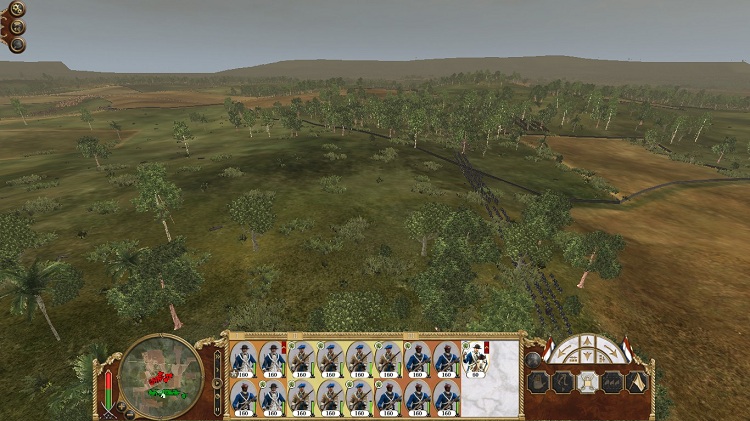
Dutch India Army Group West was the largest force, tasked with taking Goa. They would have to fight through 2 armies before reaching Goa.
 The Dutch breakthrough to Goa had encountered a fairly small force, perhaps 1000 or so Barghir with cavalry support. However, the Dutch realized that this war would be something different than the fight with the Mysore.
The Dutch breakthrough to Goa had encountered a fairly small force, perhaps 1000 or so Barghir with cavalry support. However, the Dutch realized that this war would be something different than the fight with the Mysore.
The first army defending Goa barely slows the oncoming Dutch as they advance.
 While the Barghir were similarly poorly armed compared to the Dutch as the Mysore had been, their soldiers were well trained, disciplined and devoted, even better with their muskets than the Europeans. In melee combat, their viciousness was unmatched. That they supplemented those forces with men armed with swords and shields hardly mattered. This was not a war one would want to fight when outnumbered.
While the Barghir were similarly poorly armed compared to the Dutch as the Mysore had been, their soldiers were well trained, disciplined and devoted, even better with their muskets than the Europeans. In melee combat, their viciousness was unmatched. That they supplemented those forces with men armed with swords and shields hardly mattered. This was not a war one would want to fight when outnumbered.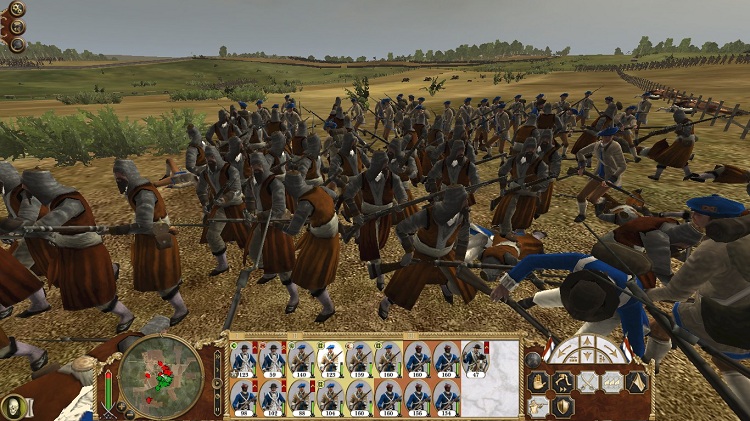
The Barghir were something entirely above and beyond the defenders of Mysore. The Dutch were unprepared for their tenacity and skill.
 It was too late now. The men pressed on to Goa, and found themselves outmatched over 2 to 3.
It was too late now. The men pressed on to Goa, and found themselves outmatched over 2 to 3.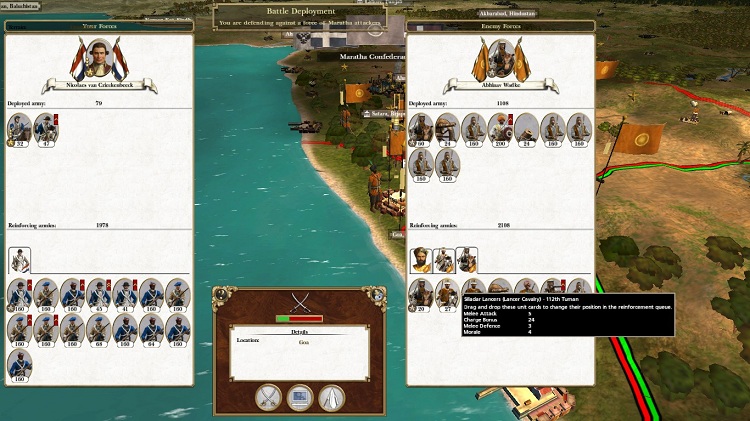
The Dutch refused to back down even after encountering insurmountable numbers around Goa.
 However, just outside the city walls of Goa was the main mass of the Maratha army. The city garrison was perhaps only 1100 of the 3200 men. The Dutch could fight a much more equitable battle by splitting the enemy forces.
However, just outside the city walls of Goa was the main mass of the Maratha army. The city garrison was perhaps only 1100 of the 3200 men. The Dutch could fight a much more equitable battle by splitting the enemy forces. In a familiar ruse, the Dutch invested the city to cut it off from the main body of troops, making sure to keep their ditches, tents and so forth relatively within view, while their troops were lined up each day beyond the hills. A few lookouts were left behind manning the camp, keeping the fires lit and firing off the occasional shot to keep the garrison confused, but the men guarding the city had long since moved to rejoin the main army.
In a familiar ruse, the Dutch invested the city to cut it off from the main body of troops, making sure to keep their ditches, tents and so forth relatively within view, while their troops were lined up each day beyond the hills. A few lookouts were left behind manning the camp, keeping the fires lit and firing off the occasional shot to keep the garrison confused, but the men guarding the city had long since moved to rejoin the main army.
Dutch forces use a limited army to keep the Goa garrison away from the battle, giving them time to take them apart piece by piece.
 These troops were intercepted just as the main body of Dutch troops moved forward to attack the southernmost army of the Maratha forces. Coming in from the west of the army in a near panic. They’d been chased by a second Maratha army of elephants that were essentially right up on top of them.
These troops were intercepted just as the main body of Dutch troops moved forward to attack the southernmost army of the Maratha forces. Coming in from the west of the army in a near panic. They’d been chased by a second Maratha army of elephants that were essentially right up on top of them.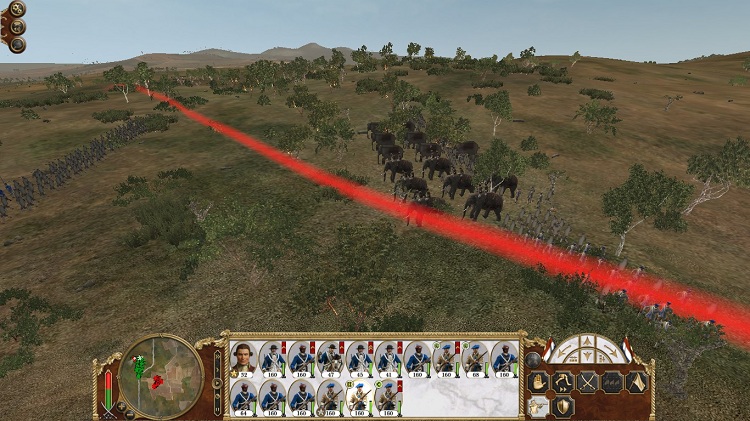
Dutch infantry retreat towards the main army while Marathan elephants trample them to death.
 The main Dutch army which was waiting on the arrival of reinforcements was in a solid position to turn their line around and gun down the pursuing army. The reinforcing Indians were surprised it had seemed, by the rest of the Dutch army. They had been too intent on pursuing the fleeing men, and had run straight into the Dutch squares.
The main Dutch army which was waiting on the arrival of reinforcements was in a solid position to turn their line around and gun down the pursuing army. The reinforcing Indians were surprised it had seemed, by the rest of the Dutch army. They had been too intent on pursuing the fleeing men, and had run straight into the Dutch squares.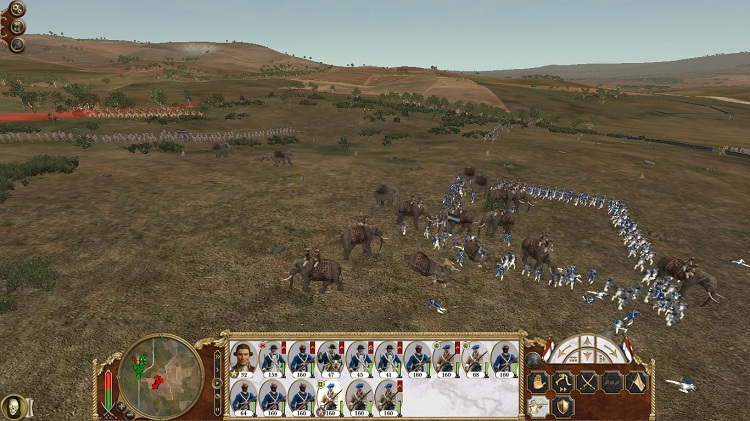
Dutch infantry caught facing the wrong direction scrambled into their squares. The elephants managed to break into them, but were mostly killed as they had no support.
 The main body of Maratha troops were too far to support the newly arrived troops in time, and so the Dutch were able to quickly encircle the arriving Marathas giving their reinforcements time to regroup. The Barghir however, were able to severely bloody the Dutch forces. Despite the hundreds of losses they caused, they didn’t hold out long enough for their own reinforcements to arrive, which the Dutch consolidated army then moved forward to engage.
The main body of Maratha troops were too far to support the newly arrived troops in time, and so the Dutch were able to quickly encircle the arriving Marathas giving their reinforcements time to regroup. The Barghir however, were able to severely bloody the Dutch forces. Despite the hundreds of losses they caused, they didn’t hold out long enough for their own reinforcements to arrive, which the Dutch consolidated army then moved forward to engage.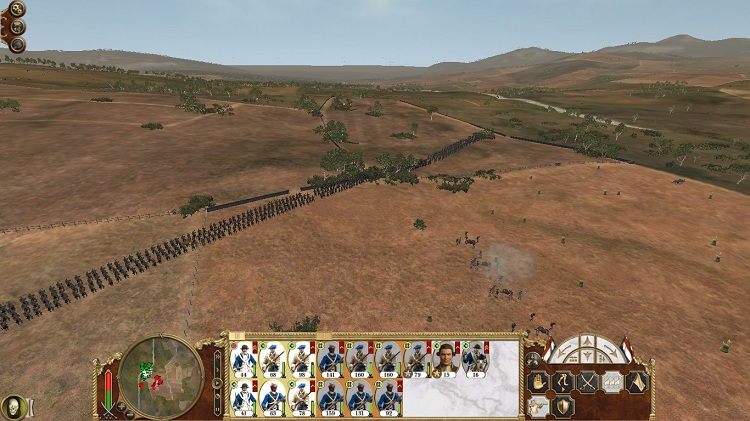
The second Maratha army straightens their lines and prepare to defend themselves once it is clear they are too late to assist their reinforcements.
 The remaining Marathas put up a similarly staunch defense from their hill, but by now were outnumbered. A third of their army was stuck in the city, another third had been lost chasing down the reinforcing Dutch troops, and this remaining third was outnumbered by the remaining Dutch to the point that they were encircled and destroyed much as their reinforcements had been.
The remaining Marathas put up a similarly staunch defense from their hill, but by now were outnumbered. A third of their army was stuck in the city, another third had been lost chasing down the reinforcing Dutch troops, and this remaining third was outnumbered by the remaining Dutch to the point that they were encircled and destroyed much as their reinforcements had been.
By splitting the Maratha forces, the Dutch could use overwhelming numbers against them in turn.
 This battle had been in some ways a stellar victory for the Dutch, in others a pyrrhic one. They’d killed nearly 2000 Maratha infantry, but at the cost of over a thousand of their own, but despite all this, the Maratha still outnumbered the Dutch about 1600 to 1000. Scarcely an improvement of their former situation.
This battle had been in some ways a stellar victory for the Dutch, in others a pyrrhic one. They’d killed nearly 2000 Maratha infantry, but at the cost of over a thousand of their own, but despite all this, the Maratha still outnumbered the Dutch about 1600 to 1000. Scarcely an improvement of their former situation.
The Dutch casualty list. It was one of the bloodiest in their history.
 The small detachment of soldiers between the East and West army groups moved to counter one of the reinforcing battalions of Ghoorkas that were spotted moving towards Goa. The open field heavily favoured the guns of the Dutch, and the brave swordsmen were run down by cavalry, but the costs were high. The small group of soldiers were forced back to Mysore, and would no longer be capable of defending the flanks of their advancing soldiers.
The small detachment of soldiers between the East and West army groups moved to counter one of the reinforcing battalions of Ghoorkas that were spotted moving towards Goa. The open field heavily favoured the guns of the Dutch, and the brave swordsmen were run down by cavalry, but the costs were high. The small group of soldiers were forced back to Mysore, and would no longer be capable of defending the flanks of their advancing soldiers.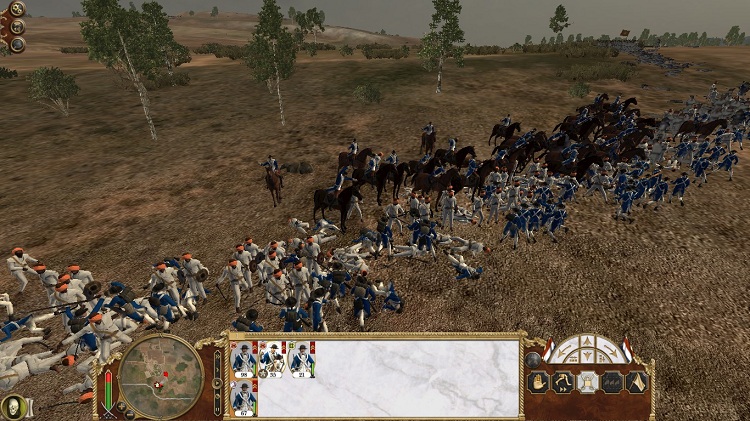
While the Ghoorkas were excellent soldiers, without cavalry or gun support, they were unable to stop flanking by cavalry.
 This meant the Dutch around Goa were forced to fight their battle essentially as they were without the equalizing 500 men that they had hoped for. Without any reason to attempt to continue holding out, the Marathas sallied forth to attempt to crush the smaller Dutch army, starting the famous battle of Nicolaes ridge.
This meant the Dutch around Goa were forced to fight their battle essentially as they were without the equalizing 500 men that they had hoped for. Without any reason to attempt to continue holding out, the Marathas sallied forth to attempt to crush the smaller Dutch army, starting the famous battle of Nicolaes ridge.
The Dutch prepare to defend against a Maratha counter offensive.
 Unlike the last battles where the Dutch were dramatically outmatched, the Maratha army could not be effectively split here, nor surrounded in parts and destroyed in pieces. Worse yet, the Dutch were forced to expend virtually all of their professional soldiers in fighting the main Maratha forces outside Goa, leaving them an army with perhaps 400 real soldiers, and perhaps 600 militia. The Marathas however, were relying nearly entirely on the excellent Barghir and Ghoorka infantry.
Unlike the last battles where the Dutch were dramatically outmatched, the Maratha army could not be effectively split here, nor surrounded in parts and destroyed in pieces. Worse yet, the Dutch were forced to expend virtually all of their professional soldiers in fighting the main Maratha forces outside Goa, leaving them an army with perhaps 400 real soldiers, and perhaps 600 militia. The Marathas however, were relying nearly entirely on the excellent Barghir and Ghoorka infantry.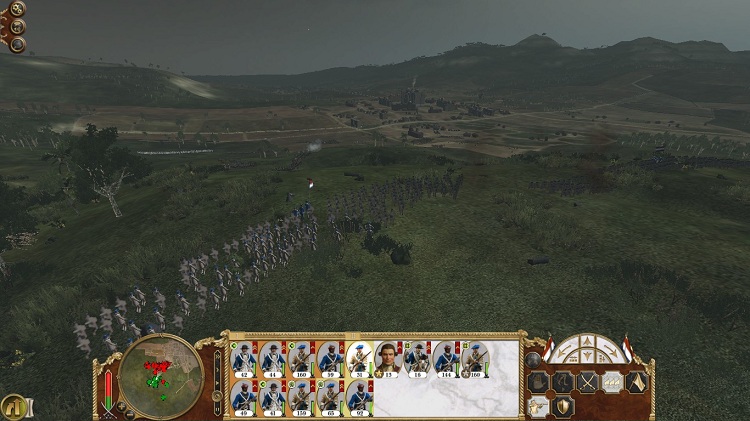
The commanding view from the Dutch held position.
 The only advantage the Dutch had was the massive hill with the narrow pass that they had retreated to. If the Dutch could hold out on the steep wooded slope of the mountain pass, their men may have been at enough of an advantage to outlast the Maratha army.
The only advantage the Dutch had was the massive hill with the narrow pass that they had retreated to. If the Dutch could hold out on the steep wooded slope of the mountain pass, their men may have been at enough of an advantage to outlast the Maratha army. Battle opened up during a dark, grey morning of October. The Dutch stood with a wedge of fire pointed at the narrow mountain pass, while others stood about the cliff face as though it were a great redoubt, ready to fire down at men below the ledge.
Battle opened up during a dark, grey morning of October. The Dutch stood with a wedge of fire pointed at the narrow mountain pass, while others stood about the cliff face as though it were a great redoubt, ready to fire down at men below the ledge.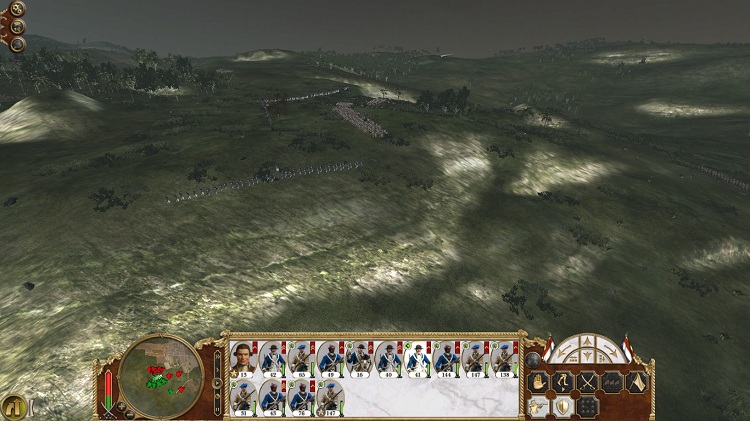
The Dutch formation along Nicolaes ridge, named after the Dutch general.
 The Maratha forces advanced up the hill. Hundreds of men jammed tightly in the pass under fire from the militia. Even so, a thousand men broke through the pass and began deploying in lines, some 10 feet from the Dutch militia. Men said they could see the colour of their enemy’s eyes as they reloaded. Brown, black, gold, some fading to grey. The killing field, as the small plateau the Dutch occupied came to be known was choked with the dead, some who tried to rush the lines, others riddled with shot from the Dutch militia.
The Maratha forces advanced up the hill. Hundreds of men jammed tightly in the pass under fire from the militia. Even so, a thousand men broke through the pass and began deploying in lines, some 10 feet from the Dutch militia. Men said they could see the colour of their enemy’s eyes as they reloaded. Brown, black, gold, some fading to grey. The killing field, as the small plateau the Dutch occupied came to be known was choked with the dead, some who tried to rush the lines, others riddled with shot from the Dutch militia.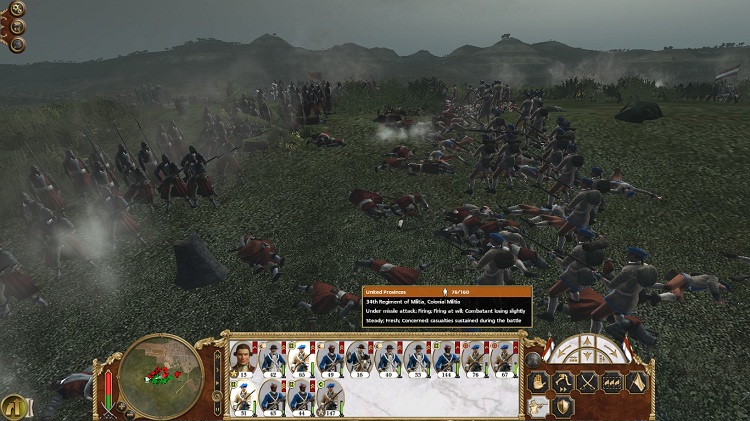
Barghir are forced to march extremely close to the Dutch to get out of the narrow pass.
 The fighting continued for what must have seemed an eternity. The Barghir had lost hundreds of men, and had killed less even than a hundred of the Dutch. They needed to try something different.
The fighting continued for what must have seemed an eternity. The Barghir had lost hundreds of men, and had killed less even than a hundred of the Dutch. They needed to try something different. A battalion of cavalry, and one of musket armed infantry moved along the left of the mountain, trying to find another pass. The battered and depleted reserve of regular Dutch infantry, backed by a cannon fodder battalion of militia blocked their advance, pushing them back, and destroying the Maratha cavalry. They could not rally their troops on that flank with Maratha morale crumbling all across their line. They had one last gambit
A battalion of cavalry, and one of musket armed infantry moved along the left of the mountain, trying to find another pass. The battered and depleted reserve of regular Dutch infantry, backed by a cannon fodder battalion of militia blocked their advance, pushing them back, and destroying the Maratha cavalry. They could not rally their troops on that flank with Maratha morale crumbling all across their line. They had one last gambit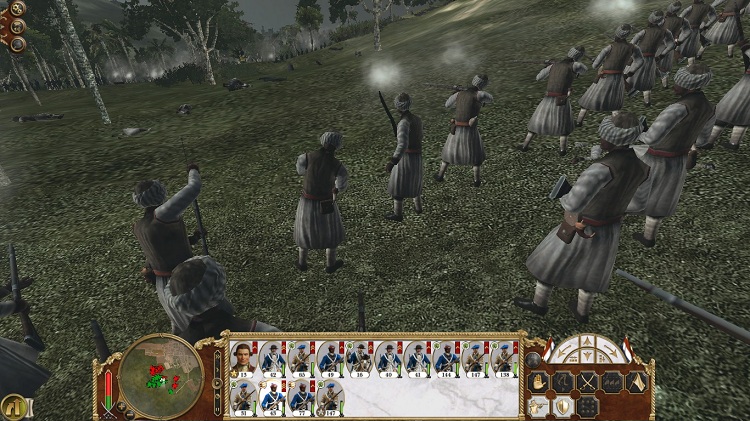
Flanking Marathas were foiled by Dutch reserves.
 The Barghir, having failed to establish a proper firing line to match the Dutch formation were pushed aside as the Ghoorkas charged along their left flank, attempting to remove the enfilade from the advancing troops. The Barghir were then free to fire at the Dutch militia one to one. Exhausted by the long march up the mountain slope, the men were too tired to swing their swords. Though better trained, better motivated and better armed for close up work, not even the Ghoorkas could stave off exhaustion. Pushed back down the mountain side, their retreat forced the Barghir to retreat as well, their flank now open once more.
The Barghir, having failed to establish a proper firing line to match the Dutch formation were pushed aside as the Ghoorkas charged along their left flank, attempting to remove the enfilade from the advancing troops. The Barghir were then free to fire at the Dutch militia one to one. Exhausted by the long march up the mountain slope, the men were too tired to swing their swords. Though better trained, better motivated and better armed for close up work, not even the Ghoorkas could stave off exhaustion. Pushed back down the mountain side, their retreat forced the Barghir to retreat as well, their flank now open once more.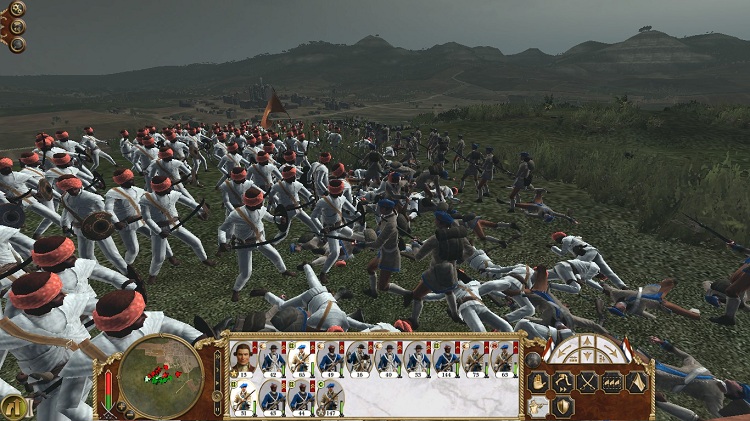
Ghoorka infantry charge the Dutch right flank. Men were so tired after charging up the mountain, even the militia were a match for them.
 Down to only a few hundred men, the Dutch were in still not in the clear. They needed to attack quickly, while the Maratha morale was low. As the Barghir retreated away from the horrifying pass, the militia and remaining forces charged down the blood soaked mountain side.
Down to only a few hundred men, the Dutch were in still not in the clear. They needed to attack quickly, while the Maratha morale was low. As the Barghir retreated away from the horrifying pass, the militia and remaining forces charged down the blood soaked mountain side.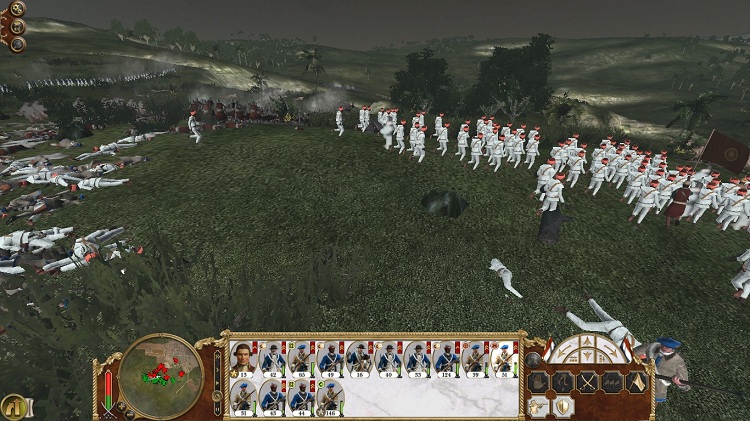
The Ghoorka retreat forces the entire line back, the Barghir flank opened again.
 While the Maratha likely could have still won the battle then and there, the long battle and loss of battalion after battalion of their best men had completely ruined their resolve. The Dutch managed to run down a few more of those men, even though they had but 450 men remaining. The Maratha fled before the Dutch forces into Goa. Only 290 survived to the city.
While the Maratha likely could have still won the battle then and there, the long battle and loss of battalion after battalion of their best men had completely ruined their resolve. The Dutch managed to run down a few more of those men, even though they had but 450 men remaining. The Maratha fled before the Dutch forces into Goa. Only 290 survived to the city.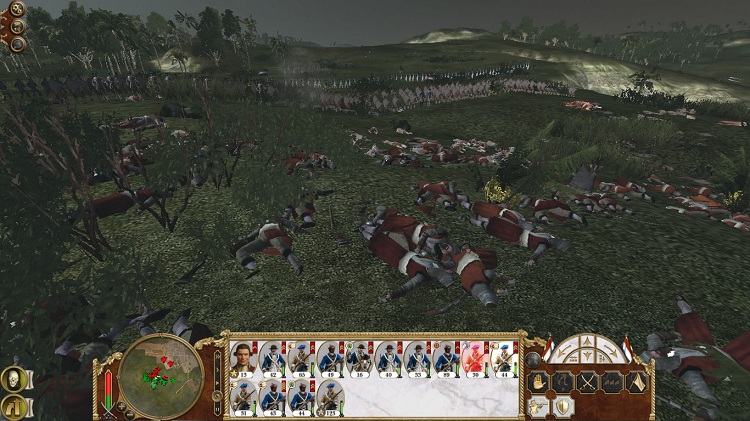
The Dutch charge down the mountain slope over the thousand dead.
 This was the great battle that the Dutch needed. The news at home lauded it as a Dutch Thermopylae, the outnumbered and outmatched Dutch forces had cut down a tremendous force and held their mountain pass. They had the added benefit of survivors.
This was the great battle that the Dutch needed. The news at home lauded it as a Dutch Thermopylae, the outnumbered and outmatched Dutch forces had cut down a tremendous force and held their mountain pass. They had the added benefit of survivors. What’s more, this was a battle that was decisively won by the militia. Once more, they’d proven themselves as good as some of the best trained soldiers in the world. The story set Amsterdam ablaze with a patriotic fervour, and filled the already over confident ministers with even more arrogance.
What’s more, this was a battle that was decisively won by the militia. Once more, they’d proven themselves as good as some of the best trained soldiers in the world. The story set Amsterdam ablaze with a patriotic fervour, and filled the already over confident ministers with even more arrogance. The final march into Goa the following December had the now veteran troops simply marching into the city. It was more akin to an execution than a battle. The Dutch had come into this war thinking the Maratha would be no more a deterrent than the Spanish or the French. Through their military brilliance, they were gradually proving themselves right.
The final march into Goa the following December had the now veteran troops simply marching into the city. It was more akin to an execution than a battle. The Dutch had come into this war thinking the Maratha would be no more a deterrent than the Spanish or the French. Through their military brilliance, they were gradually proving themselves right.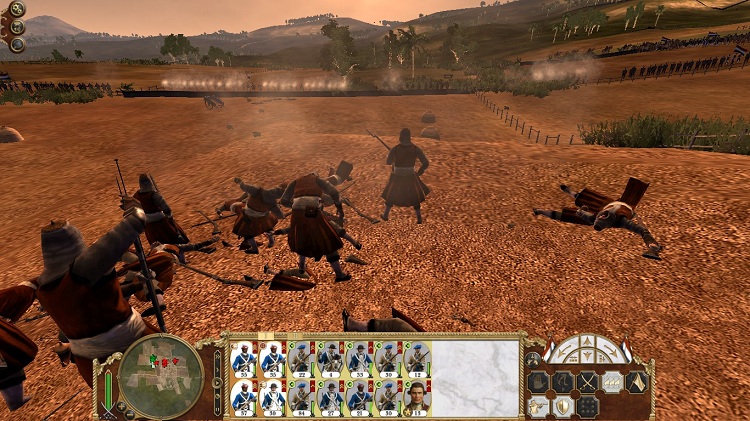
The last stand of Goa. The Dutch swept through the city, the Indian forces were virtually executed.
 On the East, the Sepoy army led by Coster drove the Maratha back into their city of Arcot. The Maratha, used to direct assault were confident that the Dutch forces would be destroyed by their superior infantry and high walls. The Dutch in the siege of Arcot however, did not directly assault the Indian army. Instead, the Dutch used their new howitzer cannons to fire carcass shot over the walls.
On the East, the Sepoy army led by Coster drove the Maratha back into their city of Arcot. The Maratha, used to direct assault were confident that the Dutch forces would be destroyed by their superior infantry and high walls. The Dutch in the siege of Arcot however, did not directly assault the Indian army. Instead, the Dutch used their new howitzer cannons to fire carcass shot over the walls.
Carcass shot killed hundreds of confused and terrified defenders.
 Flaming corpses piled high by the dozens. The walls were no protection from this fire rained down from the sky. The barrage continued for hours spreading fire and death across the Marathan garrison, who were unfamiliar with the technology. Their own battery fire was incapable of destroying the Dutch battery which was out of their range.
Flaming corpses piled high by the dozens. The walls were no protection from this fire rained down from the sky. The barrage continued for hours spreading fire and death across the Marathan garrison, who were unfamiliar with the technology. Their own battery fire was incapable of destroying the Dutch battery which was out of their range.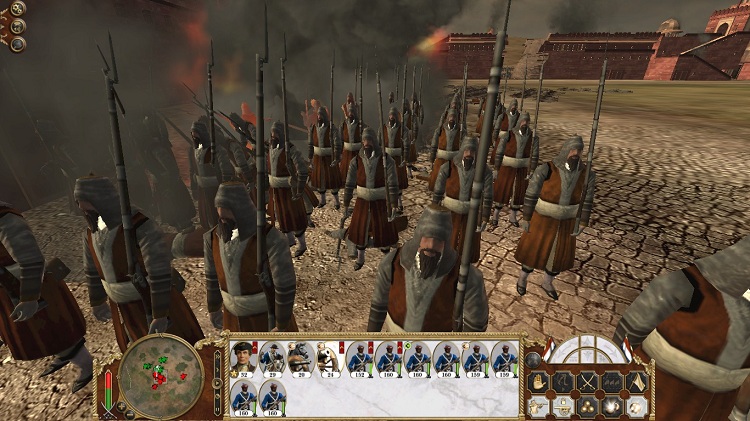
Men gathered in the fortress court yard square to pray for salvation. The Dutch spotters directed their fire on them.
 After hours of bombardment, the Dutch finally assembled an assault to clean up the survivors. The remaining few defenders spent their lives very dearly, killing hundreds of Dutch assailants driving home a grim reminder that the Marathas were fighting for their homes and their freedom. The Sepoys and V.O.C. were fighting for a few dollars in their pockets.
After hours of bombardment, the Dutch finally assembled an assault to clean up the survivors. The remaining few defenders spent their lives very dearly, killing hundreds of Dutch assailants driving home a grim reminder that the Marathas were fighting for their homes and their freedom. The Sepoys and V.O.C. were fighting for a few dollars in their pockets.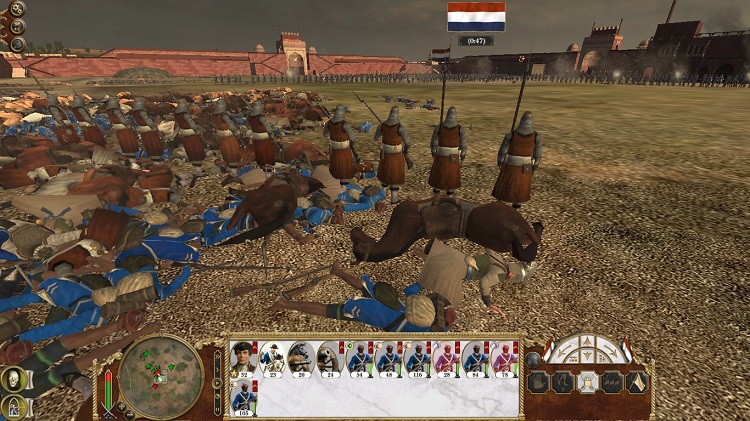
The last few Barghir spend their lives dearly, resolute in death.
 The Dutch position was theoretically secure at this time. They had their back to the sea, and controlled the island flanking it, as well as a solid front. The Maratha fleet was large, but under gunned, and control of the sea lanes would very soon be under Dutch control.
The Dutch position was theoretically secure at this time. They had their back to the sea, and controlled the island flanking it, as well as a solid front. The Maratha fleet was large, but under gunned, and control of the sea lanes would very soon be under Dutch control. In our next broadcast, we present the 80 years war as it happens in Europe. Next we will be presenting an interview with Richard Havel discussing the new Penultimate series of laptops. In half an hour, we will be presenting world news. If you want news of the current war in the Middle East please channel in to BBC radio 1. David Stephenson will be presenting more on the 80 years war in 3 days.
In our next broadcast, we present the 80 years war as it happens in Europe. Next we will be presenting an interview with Richard Havel discussing the new Penultimate series of laptops. In half an hour, we will be presenting world news. If you want news of the current war in the Middle East please channel in to BBC radio 1. David Stephenson will be presenting more on the 80 years war in 3 days.